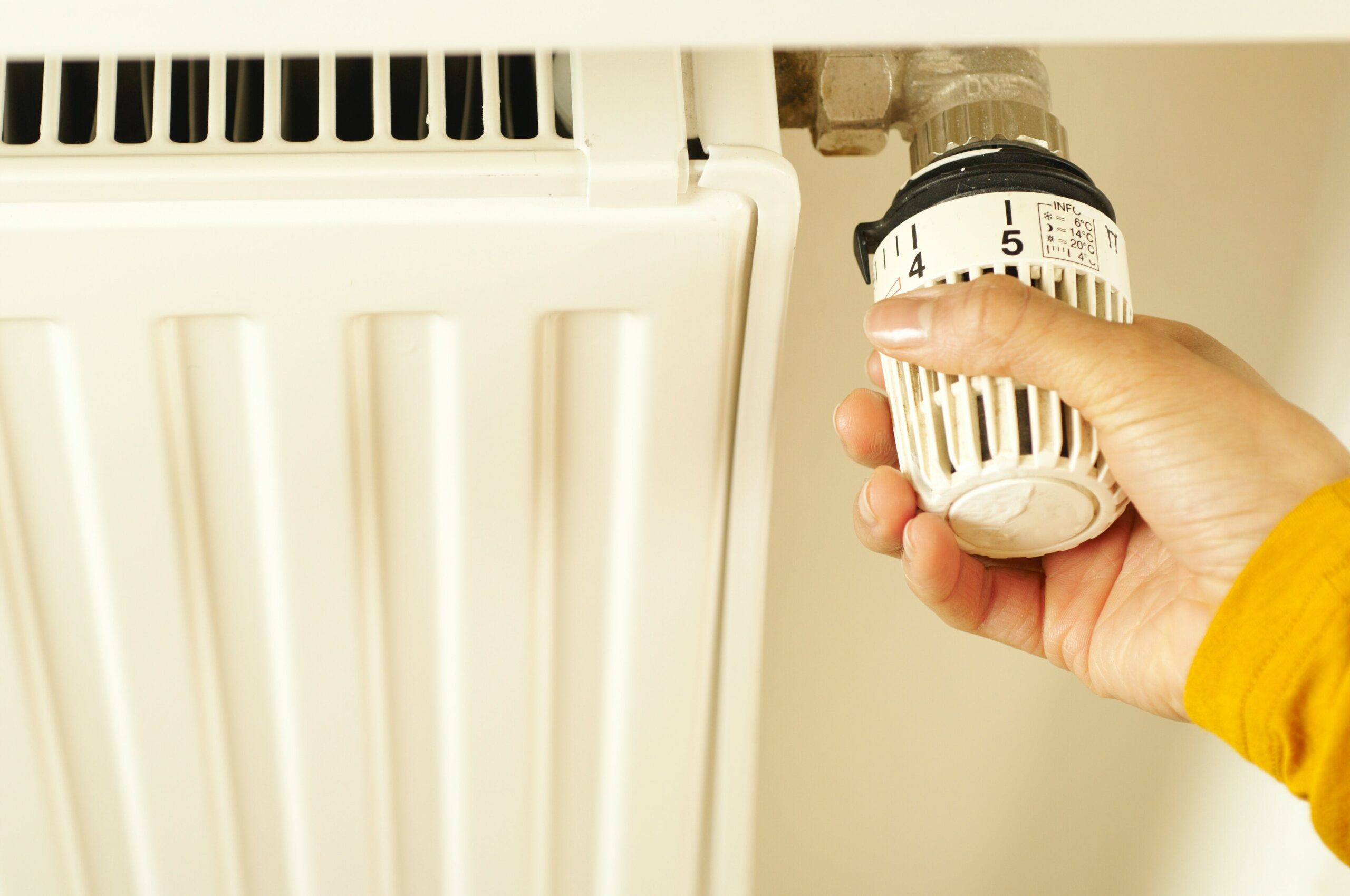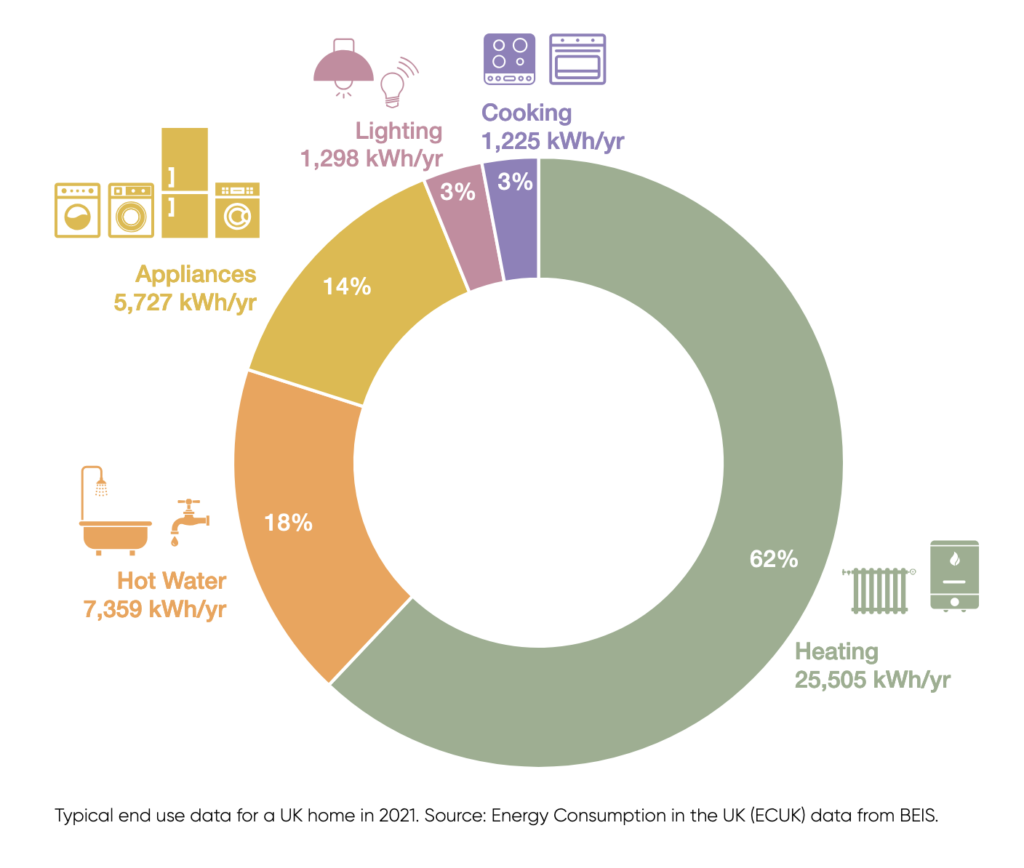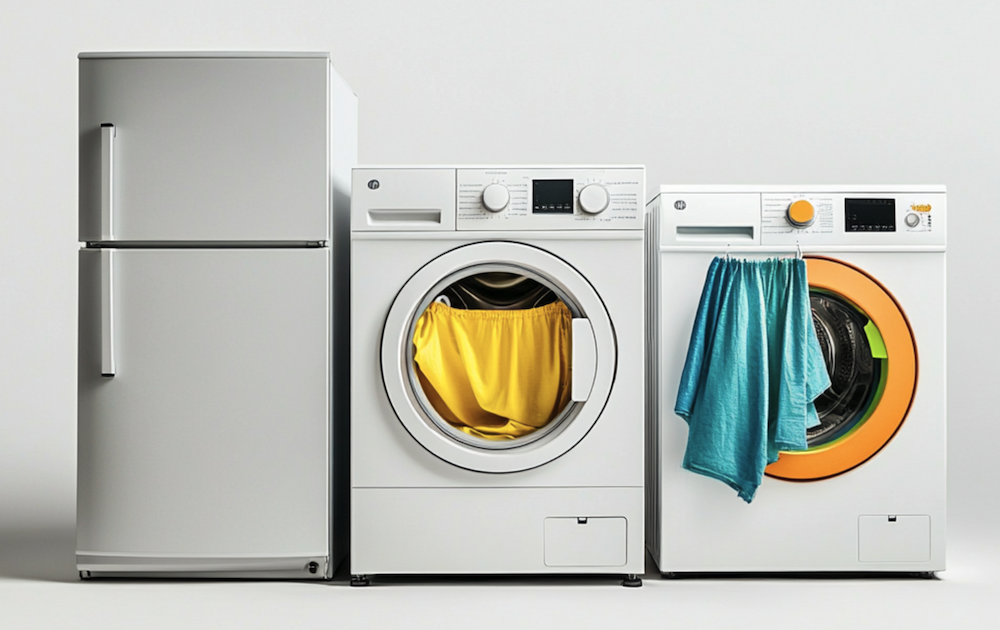
Where is your home using the most energy?
Are you looking at your energy bills and wondering, “Where does all this energy go?” Understanding how your home uses energy is the first step to improving efficiency, lowering costs, and staying comfortable.
For most homes, heating is the biggest energy cost—by quite a margin. But it’s not the only one. From hot water to lighting and appliances, every part of your home plays a role. The good news? By focusing on the biggest users and making a few simple changes, you can start saving straight away.

Start with what matters most: heating
Most of your energy is spent keeping your hHeating typically accounts for more than half of a household’s energy use. Tackling it first can make the biggest difference.
- Insulate well: Loft and wall insulation help keep warmth in and cold out.
- Stop the draughts: Seal gaps around windows, doors and letterboxes to prevent heat escaping.
- Upgrade your heating system: If you’re using an older boiler, switching to a high-efficiency condensing model can reduce energy waste. For even greater impact, consider a heat pump – it’s a low-carbon option that future-proofs your home.
- Get smart with controls: Smart thermostats let you heat your home only when and where it’s needed, helping you save without lifting a finger.
Quick win: Lower your thermostat by just 1°C and you could cut your heating bill by up to 10% – while staying warm and cosy.
Hot water – everyday savings that add up
Water heating might seem small compared to space heating, but it’s still a meaningful chunk of your energy use:
- Turn down the temperature: Many boilers default to heating water hotter than needed. A setting of 50–55°C is usually enough for daily use.
- Install a water-saving showerhead: Less water used = less water to heat.
- Use timers: Only heat water when you’re likely to need it – like mornings and evenings.
- Insulate your water tank and pipes: Keep stored hot water hotter for longer, cutting down on reheating.
Quick tip: If your hot tap runs scalding, your settings are too high – and your bills probably are too.
Appliances – choose wisely, use cleverly
Older appliances often use much more energy than modern ones. When the time comes to replace them, choose energy-efficient models—and make the most of what you have now.
- Fridge-freezers: New models are much more efficient.
- Dishwashers: Use eco modes and full loads for the best savings.
- Tumble dryers: Heat pump dryers are far more efficient – or better yet, air-dry when you can.
- Washing machines: Wash at 30°C and choose high-spin cycles to reduce drying time.
- Cooking: Induction hobs are quicker and more efficient than standard electric hobs.
Top tip: Many devices draw power even on standby. Unplug or use smart plugs to cut waste when they’re not in use.

Lighting – small change, long-term gain
Switching to LED bulbs is one of the quickest, most effective ways to cut energy use. They use up to 80% less electricity and last far longer than traditional bulbs.
Simple habits, big results
Some of the most powerful changes are the easiest to make:
- Close doors to keep heat where it’s needed.
- Turn off lights and devices when not in use.
- Track your usage with a smart meter – you’ll spot patterns and savings instantly.
Want to know where your energy’s really going?
The best way to understand how your home uses energy – and where to take action – is through a professional Whole House Plan. Developed from an in-depth home assessment, it gives you tailored, expert advice on the most effective upgrades, how they fit together, and what to prioritise.
Whether you want to lower your bills, improve comfort, or future-proof your home, a Whole House Plan helps you make confident, well-informed decisions that work for the way you live.
With energy prices and climate concerns top of mind, now’s the time to plan for a warmer, greener home – built around you.
Image source: The Devon Retrofit Guide [PDF]
